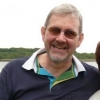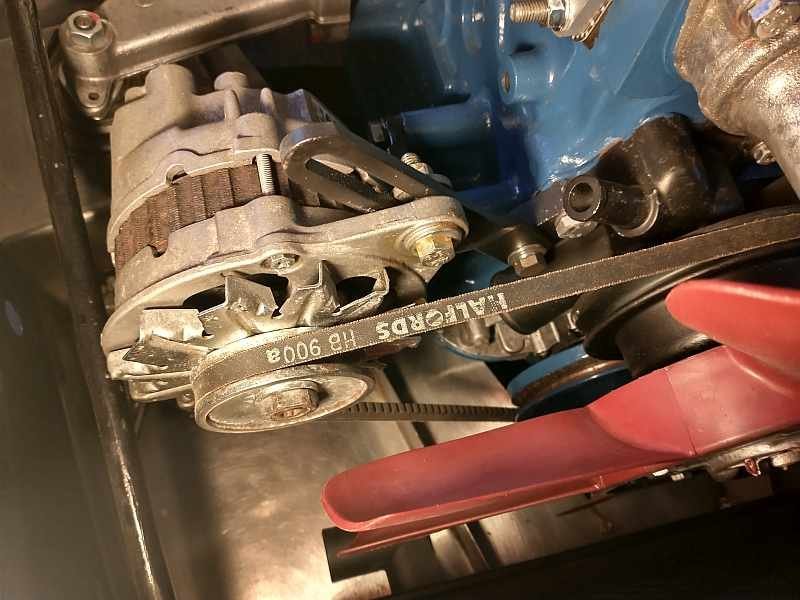-
Posts
351 -
Joined
-
Last visited
-
Days Won
14
Sparepart last won the day on October 14 2023
Sparepart had the most liked content!
Previous Fields
-
Car type
Robin Hood EXMO
-
Full name
Not Available
Profile Information
-
Location
Chichester
Recent Profile Visitors
9,272 profile views
Sparepart's Achievements

Wheely good builder! (4/6)
39
Reputation
-
I looked at the links, reasonable enough. A "new adult" usually has a lot going on and a busy life etc. You know him better than me (obviously), first take a step back and consider whether or not to get him started on something that will take up a lot of his time. If he is rich, then of course a top price kit from Caterham can be built in several weekends with access to a decent garage and tools. Bit like buying a Lego kit to build a Star Wars object, buy the kit, follow a plan, and hey presto kit built and the itch to put it together and play with it is truly scratched, now move on to something completely different like Fly Fishing ..... you know what young adults can be like. If he is not rich, then kits that leave more for the builder to figure out and understand will take up more time and real concentration on the engineering principles involved in puting it all together. The danger is that he will run out of steam and after a year we will see the bits and pieces of his partialy completed project for sale on eBay. If you think that it is something you would like to see him doing then I would advise that finding web links to advice sites is useful but he can easily do this on his smartphone while eating his cornflakes, no, I would advise you to have a bet with him that he can't put a kit car together, a personal challenge from his aunt. If he accepts the challenge then job done, he will do the rest, if he doesn't then you will know that he is not really serious about it. OOps here I go again, on a soap box......too much advice probably.
-
BTW. Any old type of resistor won't do. It must be able to operate without overheating and burning out. The 2.2 watt ignition light gets quite warm, eventually can burn out and stop the alternator charging. It is not expensive to buy a resistor that will more than cope with the power. I attach photo of an example below, only costs around 3 quids and should last until the end of the universe. You would need one at whatever ohms you are after of course not necessarily the one shown.
-
I have recently been investigating this subject due to having destroyed an alternator trying to change the brushes,.... we don't talk about this. However, here is what I think I believe is relevent to this thread. The connections on the alternator are a group of three spade terminals in a line, two large and one smaller. The two large terminals are connected together, that is they are essentially one terminal, check this out with your meter. On my car they are both connected to the same heavy duty cable going directly to the positive terminal on the battery. The small terminal is connected to the alternator regulator circuit, the circuit that controls the current feed to the field coils which regulates the output from the alternator (on the big terminals). When the alternator is generating power, it uses the generated power to feed the field coils under control of the regulator. So it's a chicken and egg situation. If the alternator is not generating power it can't engergize the field coils. This is the situation when the engine is first starting up. A small current is needed by the regulator in order to slightly energize the field coils to generate a tiny current that is then fed back into the coils etc. until the process builds up to the large current output produced by the alternator. This small current of course comes from the battery. It is convenient to use the resistance of the filament in an incandesant light bulb to allow only a small current to the regulator because as soon as the alternator starts to generate a greater current at 12 volts, no current will flow to/from the battery to the regulator and the light bulb will go out. We call this bulb the "ignition light". On the Sierra donor, this bulb is rated at 2.2 watt. At 12 volts this means that the current flowing to the regulator at startup is 183 milliamps, and implies that the bulb provides a resistance of 66 ohms. It's important not to feed too much current to the regulator, it might cause harm, so any lower resistance in this circuit should be avoided. Higher resistance is safe as long as enough current flows to get enough initial field in the field coils. Replacing the Ignition Light with an LED or any high resistance device/circuit usually prevents enough current reaching the regulator, accordingly a resistance can be introduced IN PARALLEL, remember the formula 1/R = 1/r1 + 1/r2, such that the total resistance is reduced towards the nominal above.
-
I still have EXMO build DVDs (Copies of the VHS), Message me to discuss logistics if you want copies.
-
I echo IanS .... I typed the below before I read his reply....duh!. In the above you refer to "bolts" and "studs" I'm not clear what you have, but under the car if you see a bolt head for a bolt that goes up through the floor and into the seat, and you are worried about the nut at the end of the bolt not being fixed to the frame, then this will be obvious as soon as you undo the bolt. If it's not fixed then it may turn and prevent the bolt from unloosening. If its held in some form of channel then as soon as a noticable amount of thread appears as you undo the bolt you can try pushing up on the bolt to see if the nut comes out of a channel in the frame. However if you have a "stud" coming out of the bottom of the seat you will see a thread coming through the floor under the car and a nut to undo. This will not be a problem because if you can get the nut off you will still have the stud sticking out of the bottom of the seat when you lift it out.
-
Here are a couple of shots of the alternator arm on my car. The Engine end of the arm is fixed by a bolt that threads into the water pump, M8 I think.
-
Sorry if I have not been clear in my description. I have rebuilt as is, i.e. no modifications to the choke mechanism. From the manual, I performed the 56 steps to disassemble into all the parts, then followed the 81 (yes 81) steps to rebuild using the service kit parts and feeler gauge where needed. As you can see from the final pictures in the rebuild series everything is back together including the stepper motor. It's waiting to be fitted when my feet don't cold in the garage. There are still 28 steps, under "Adjustments and Tuning" that need to be carried out when the engine is running and cold then hot. I have seen this as a "challenge" rather than what I would advise anyone to do. When you consider the complexity of this carb and it's dependence on the ESC2 ignition system I am willing to ditch it all and fit a simpler carb and new ignition system if it doesn't work out.... it's just because it was on the Sierra when I took it apart and I thought I would try and keep it .... you know reuse, recycle etc.
-
Strangely, I spent last winter rebuilding this carb, for my car, bought the rebuild kit, stripped down, rebuilt, its waiting to be installed this spring. I have detailed photos of the strip and rebuild. I have loaded them on to a OneDrive and set them up to be shared via a link for a browser of your choice. I am placing the link below, I am sure you will let me know if it doesn't work. I also have a digital copy of a chapter from a Weber manual that I used..... however I won't share it here for fear of copyright issues. https://1drv.ms/f/c/13a2e334f3ad6ca6/EoE7NxHD1XROsY__3Bn75jMBEPg22cZbdn8hwRESyBGsHQ?e=Ijwqpy
-
Here is a poor quality rip from the manual, you can see where it fits in relationship to the distributor. BTW - this sensor is the one that is used for the water temperature gauge on the dashboard. In the unlikely event that your engine is using the ESC2 electronic ignition then there is another temperature sensor on the inlet manifold, used by the module to control the choke stepper motor and engine advance.
-
The answer to your second question is yes, if you scrap a vehicle the V5 must be handed in at the ATF (Authorized Treatment Facility) you only keep the yellow part of the V5 as for a sale or transfer. This is all covered in the official documentation at https://www.gov.uk/scrapped-and-written-off-vehicles. If a registered vehicle is not scrapped or written off then someone must either pay duty or have a SORN in place. Given this, I can't see how the actual donor V5 can be part of registering a kit car, although of course a photo copy or scan could be retained by you.
-
I attach below a pdf that has a colour diagram of the lighting circuits. The steering column switch shows up as items 35 and 36 which are housed in the same unit and share contacts. So looking at this we can answer your questions about contacts as follows:- 54. Live via Fuse 9 from ignition switch posn 2 and 3 30. Live direct from battery 15. Live un-fused power from the ignition switch posn 2 and 3 31.- Can't see this on the column switch (35/36) it is the earth connection on the indicator flasher relay. If the one you see on the column switch has brown wire the its probably an earth. 56a. Feeds fuses 14 and 15, Main beam (also driving lights relay which you most likely dont have) 56b. Feeds fuses 16 and 17, Dip beam (possibly a dip beam relay which you most likey dont have) 55. Think that might be the horn. 58. Feeds fuses 18 and 19, Side lights, number plate light etc. H is power from the Hazard warning swich, on top of column. L. and R. are the Left and Right power to the LHS and RHS indicator bulbs from the flasher relay via pin 49a. The frantic clicking of the flasher unit is most likely either a bad bulb or bad earth to the bulbs. The flasher unit uses the current flowing through it to heat a bi metal strip, that then breaks the contact until it cools down and then makes contact again etc, it is wired in parallel to the flasher bulbs, and has its own earth (see diagram) so if the bulb circuit goes to hight resistance, more current flows through the flasher and it heats up quicker and operates more often. Sierra-Lights-Wires.pdf
-
Looks like they are screwed into a piece of threaded tube that crudely welded to the frame. There is corosion around the tube base and it looks like moisture could get in there. So most likely the end of the thread at the base of the tube has rusted and expanded so that now it has to cut a thread through the rust as it unscrewed. I would give both ends a dose of wd40 and then slowly increase the amount unscrewed by turning till it stops then screwing back in a bit, then out a bit more, then in again etc until a thread is cut thruough the rusty bit.
-

EMI (electromagnetic interference) Problems
Sparepart replied to ThanasisPolitis's topic in Electrics
Also you might try starting and running the engine with the alternator disconnected. -
Maybe you have checked out the following thread there is a long list of things to look at and a final resolution of a problem very much like yours. https://www.fordownersclub.com/forums/topic/126981-air-con-clutch-not-engaging-pressure-relay-okay/
-
I found this topic very interesting, so did a bit of digging and soon found the reason. When the same coil is used to generate the two sparks the plugs are wired in series with the secondary coil between the two plugs. The current flow for the spark starts in the engine block, travels from the outer part of one plug to the central electrode, then through the secondary winding to the central electrode of the other plug and back to the block via the outer part of the plug. This difference in electron flow through each plug means that the erosion behaviour in each is different, one plug has +ve central electrode other has -ve central electrode, so the central electrode metal alloy is different. The diagram below makes it all clear.







